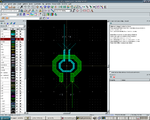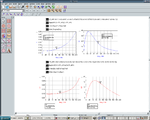fmdepassos
Junior Member level 1

Hello Guys,
I have simulated a transformer in ADS Momentum (two inductors) with 4-ports. Therefore I have a lot of S-parameter component.
If it was a two-port structure, the mutual inductance would be imag(Z12)/omega.
For a four port structure am I correct to assume that the mutual inductance would be imag(Z14)/omega.
I have simulated a transformer in ADS Momentum (two inductors) with 4-ports. Therefore I have a lot of S-parameter component.
If it was a two-port structure, the mutual inductance would be imag(Z12)/omega.
For a four port structure am I correct to assume that the mutual inductance would be imag(Z14)/omega.







